
9 minute read
TRAVELLING ON THE FAR SIDE OF THE WORLD
It’s been a tough year for travel, but with the rapid roll-out of vaccines to counter Covid-19 we can look forward to going places very soon. There is huge pent-up demand, and on the horizon is a supercharged Alaska gold rush, maybe even with an adventure you are not counting on, such as happened to me in January 2020, when the pandemic was a nightmare in the making.
WORDS DAVID WISHART
Sydney, Australia Getting to Australia has never been easy. In the days of sail the fastest clippers took 99 days from London to Sydney, the first Qantas flights in 1947 made six stops, and for the foreseeable future it looks like anywhere in Europe to Sydney will require two long flights. But it’s worth it. Sydney is an amazing city on a magical harbour, blessed with beaches such as Bondi, coastal walks with dramatic views, and a dazzling array of restaurants and bars from the Lord Nelson pub, located on a road hewn from rock by convicts, to always packed Mr Wong in the bustling city centre, the latter newly liberated by a superb light rail tram system. I’ve made a career out of finding the best way to get there, often flying to Bangkok (and the Oriental hotel) or Singapore, and taking a ship to Sydney. Both cities also have good connections to a variety of attractive destinations and resorts, from Burma to Bali, and there’s nothing like a few days relaxing at the Four Seasons Chiang Mai, built around a working paddy field. I have sailed around the west coast via Perth, and the east coast with a stop at Darwin, and this was my recent route. But in the days before boarding, there were worrying reports of smoke from bushfires enveloping Sydney. No mention of the coronavirus then.
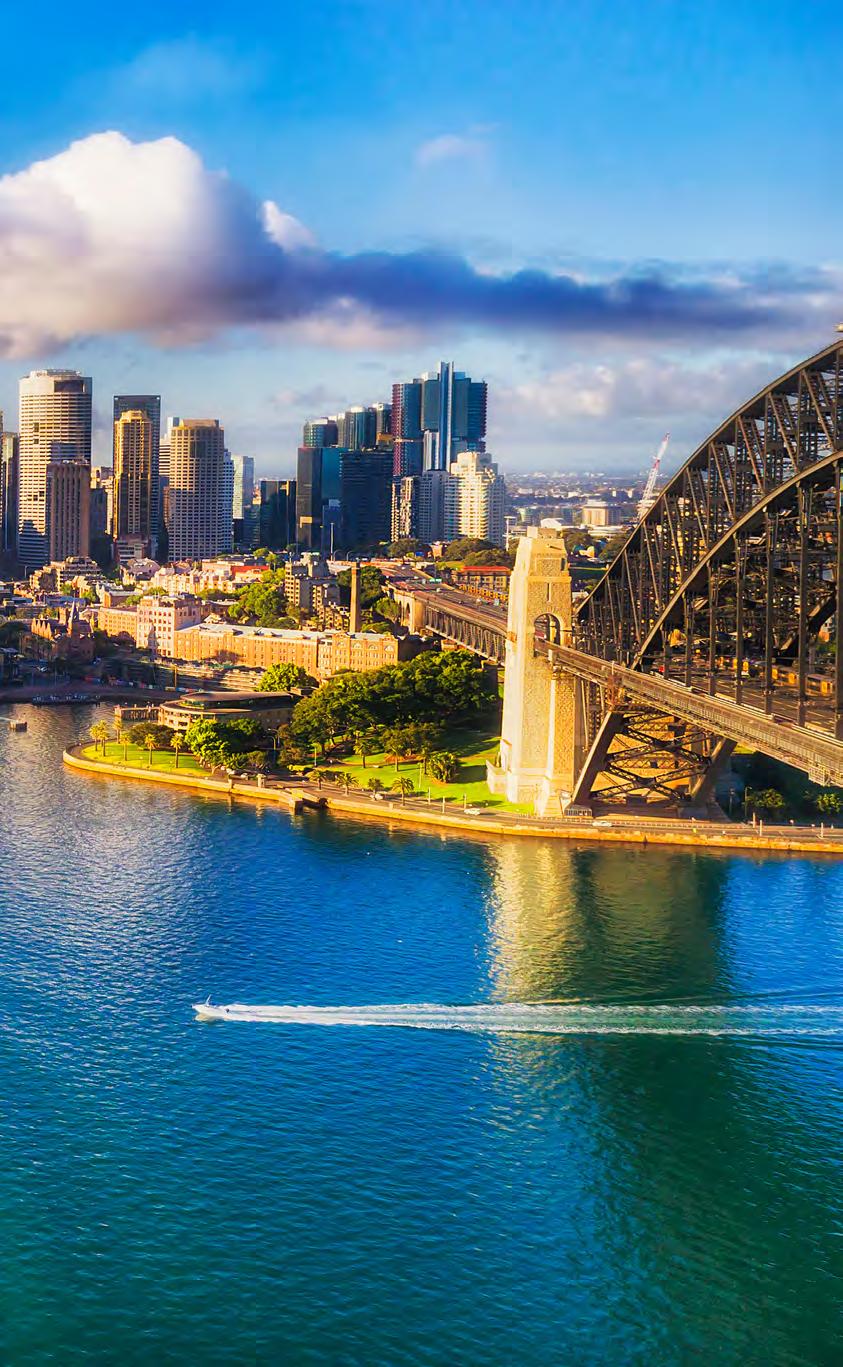
AUSTRALIAN ODYSSEY
We had planned for three weeks there, and another four nights in Melbourne for the Australian Open tennis, then Adelaide, perhaps driving the delightful Great Ocean Road, or going down the Mornington Peninsula to Portsea, a great little seaside resort with two golf courses and a pub where a schooner is a long, cold beer. After that we had an epic train ride lined up – the Ghan from Adelaide, two nights and three days of fascination on a luxury train to Alice Springs and Darwin. At Darwin we would make the shortish hop (4 hours 45 mins) to Singapore then home, the last leg of a visit to Australia and back with just one long flight either way.
But by the time our ship got to Bali, the news from Sydney was alarming – the bushfire smoke was so thick that on one occasion the harbour ferries had to be cancelled; the giant bridge was invisible from nearby Circular Quay. We started to review our itinerary, thinking about perhaps disembarking at Brisbane and flying to New Zealand, which is always a pleasure to visit. We found a cruise from Auckland with a stop at Norfolk Island that would take us to Melbourne, followed by a short flight to Adelaide and the Ghan. We were not going to miss that train.
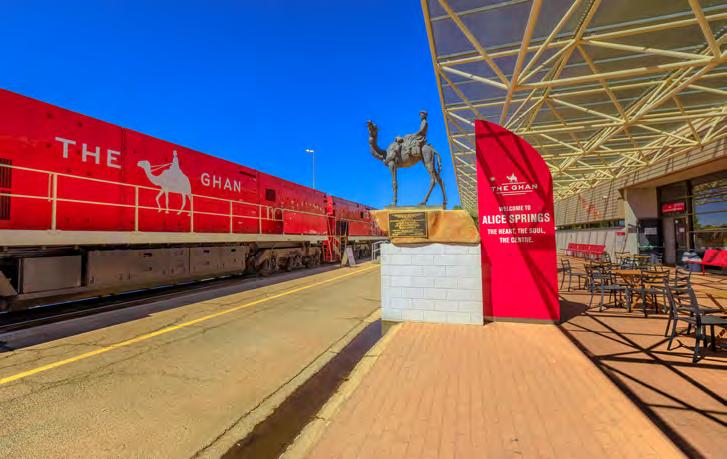
The legendary train, The Ghan in Alice Springs Train Station
© Benny Marty / Shutterstock.com
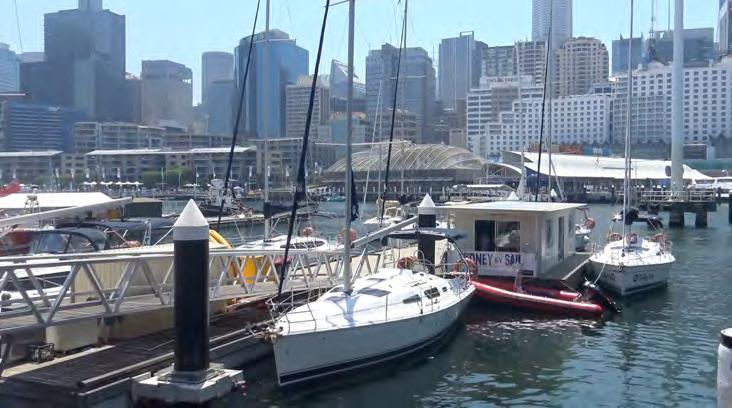
Harbour life in Sydney
But we did go to Sydney, albeit for a week less than planned, because the smoke had receded, and the entry into Port Jackson, as Captain Cook called Sydney, is one of the greatest travel experiences on the planet. Imagine, just imagine as we always do, what it must have been like to be on the first fleet that sailed between the towering heads on January 26, 1788, now Australia’s national day.
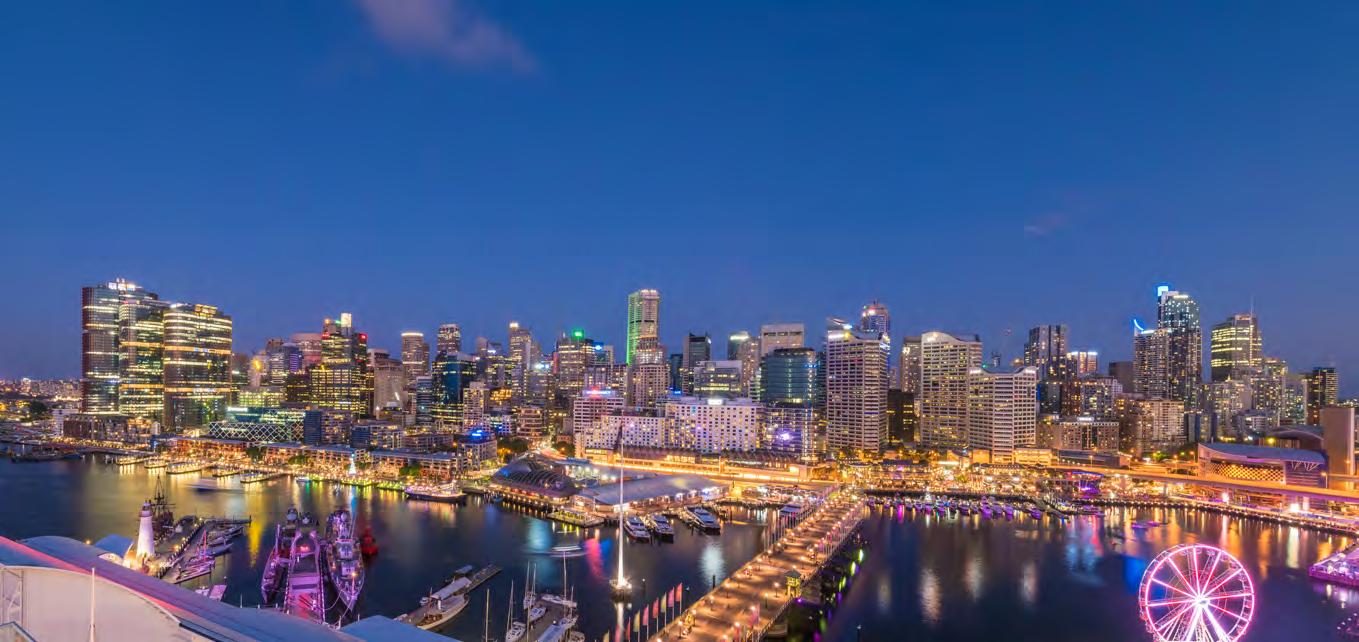
Darling Harbour
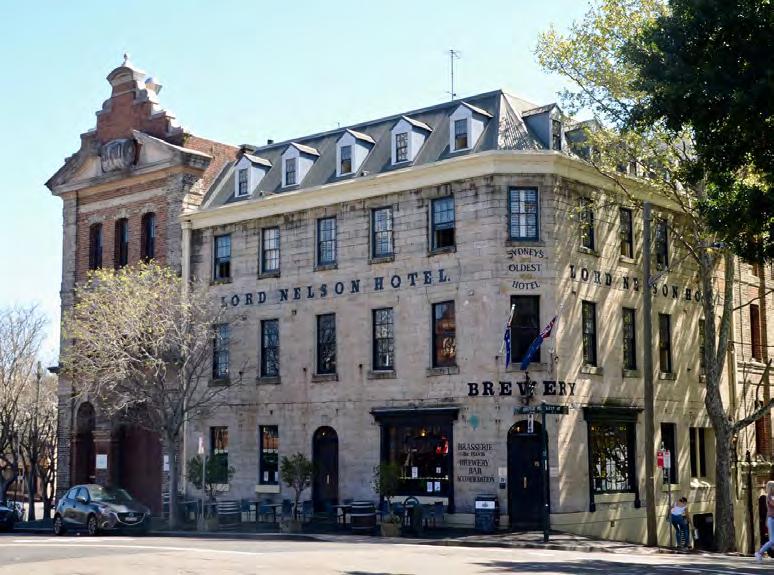
The listed building of Lord Nelson Brewery Hotel. It's the oldest working hotel in Sydney
There was no bridge, opera house, welcoming pubs and certainly no cricket. To really fire your imagination, read Robert Hughes’ epic history of the first fleet, The Fatal Shore. And we were lucky. In 13 days we only had one with a slight smoke haze, and Sydney celebrated clear skies along with the recent completion of its Light Rail system, a tram that runs from Circular Quay and goes up George Street, formerly a main drag of heavy traffic. Now cars have been cleared from much of George Street, recreating it as a spacious boulevard.
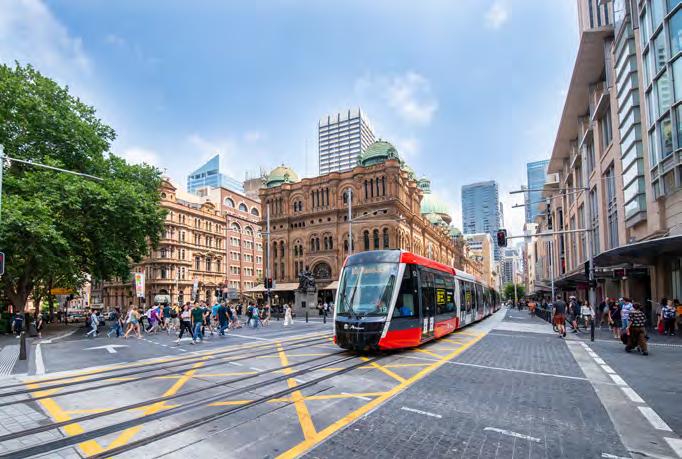
Light Rail travels along George Street
© Holli / Shutterstock.com
We stayed at a remarkable hotel, the Pullman Grand Quay, which overlooks the ferries coming and going, has a fantastic view of the bridge, and cruise ships tied up at the heritage Custom House. Our location was a two-minute walk to ferries with bustling Darling Harbour just next door, Manly and its beaches at the harbour entrance, Doyle’s seafood restaurant at Watson’s Bay, and Neutral Bay 10 minutes away on the north shore where the Oaks pub has been showing folks a good time since the bridge went up in 1932 (whose lead designer also worked on the Victoria Falls bridge). I am often asked why I keep going back to Sydney, and the answer is that I just like being there – the harbour, historic buildings, weather, parks, lunch at David Jones (Asian counter), the state library, where last year I was allowed, under escort, into the archives to see the original Tasman map of Australia from 1642, the year the Dutch explorer found Tasmania – and missed Australia. But that’s another story.
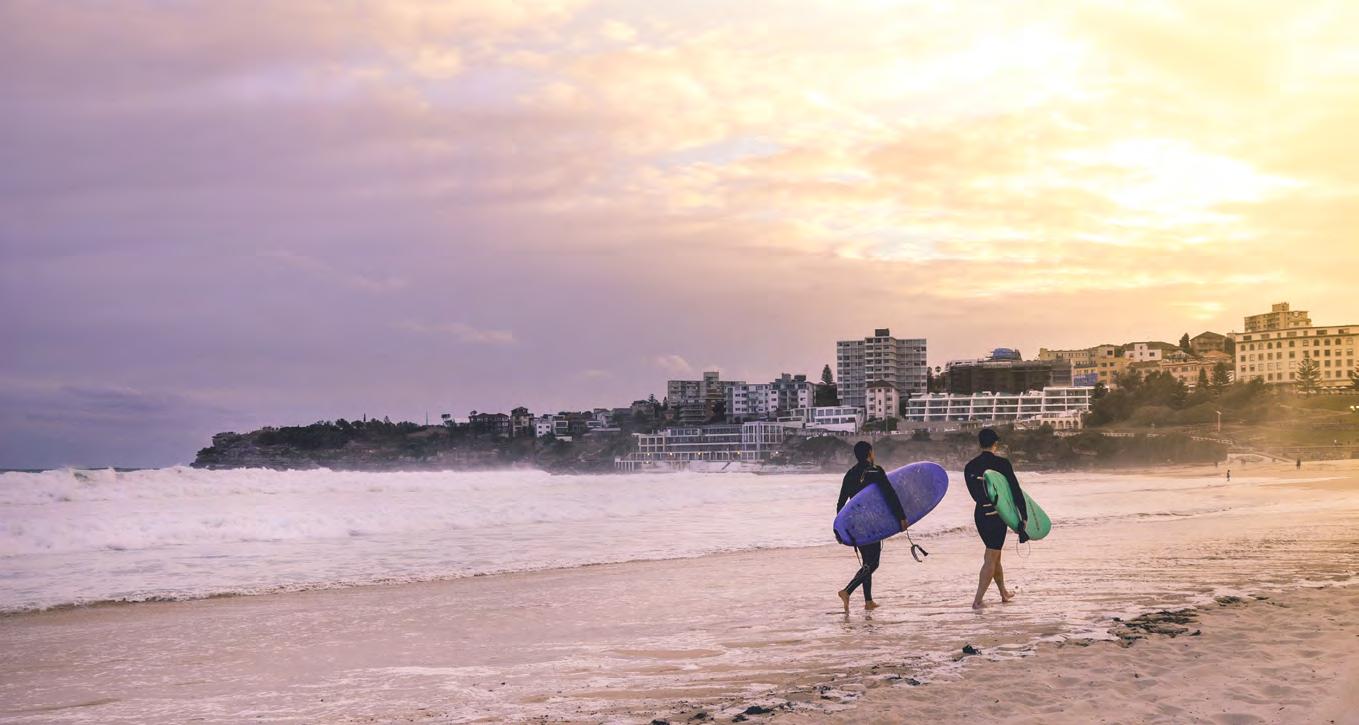
Bondi Beach, Sydney, Australia
Every visit produces a restaurant find, this time Porteno in Surry Hills, which has been around for 10 years but I had been put off by full houses and reports of high decibels. I can’t say it is less popular, but we did get in, and had some of the best sirloin ever, grilled Argentine style. And it was noisy, as are many Sydney restaurants. Eating outside is recommended.
CRUISING NEW ZEALAND
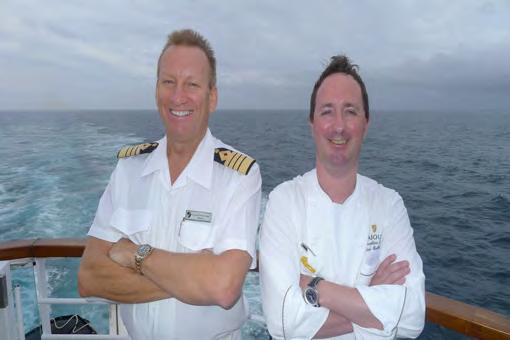
Seabourn Encore Captain and Chef of the Seabourn Encore

On board of the Seabourn Encore
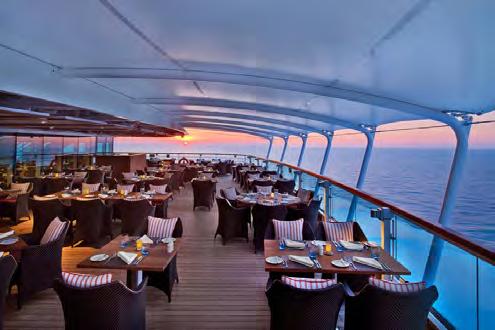
On board of the Seabourn Encore
So what did we do with the third week meant to be in Sydney? We cancelled it, and Melbourne too, and with 11 days in hand flew to New Zealand, boarding the Seabourn Encore at Auckland for a superb voyage, and along the way discovered a wonderful way to get to Australia. Fact is, although New Zealand is a tiny country compared to its neighbour across the windswept Tasman Sea, it has a lot to offer, and much can be seen from a cruise ship.
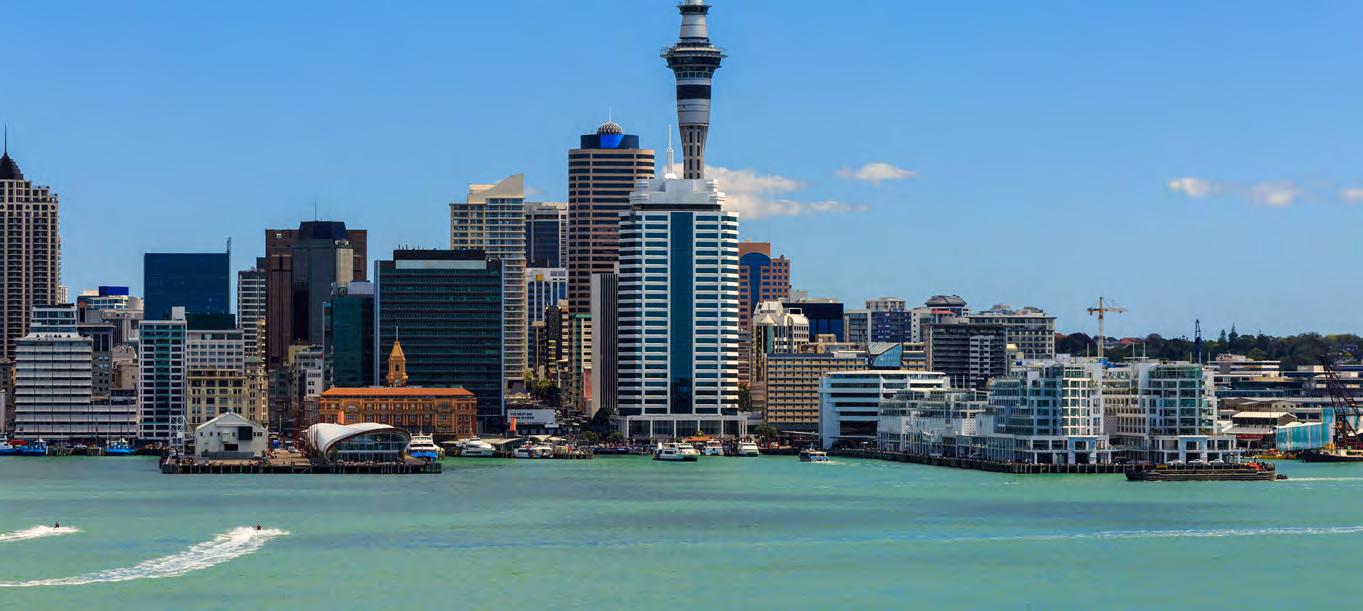
Auckland, New Zealand
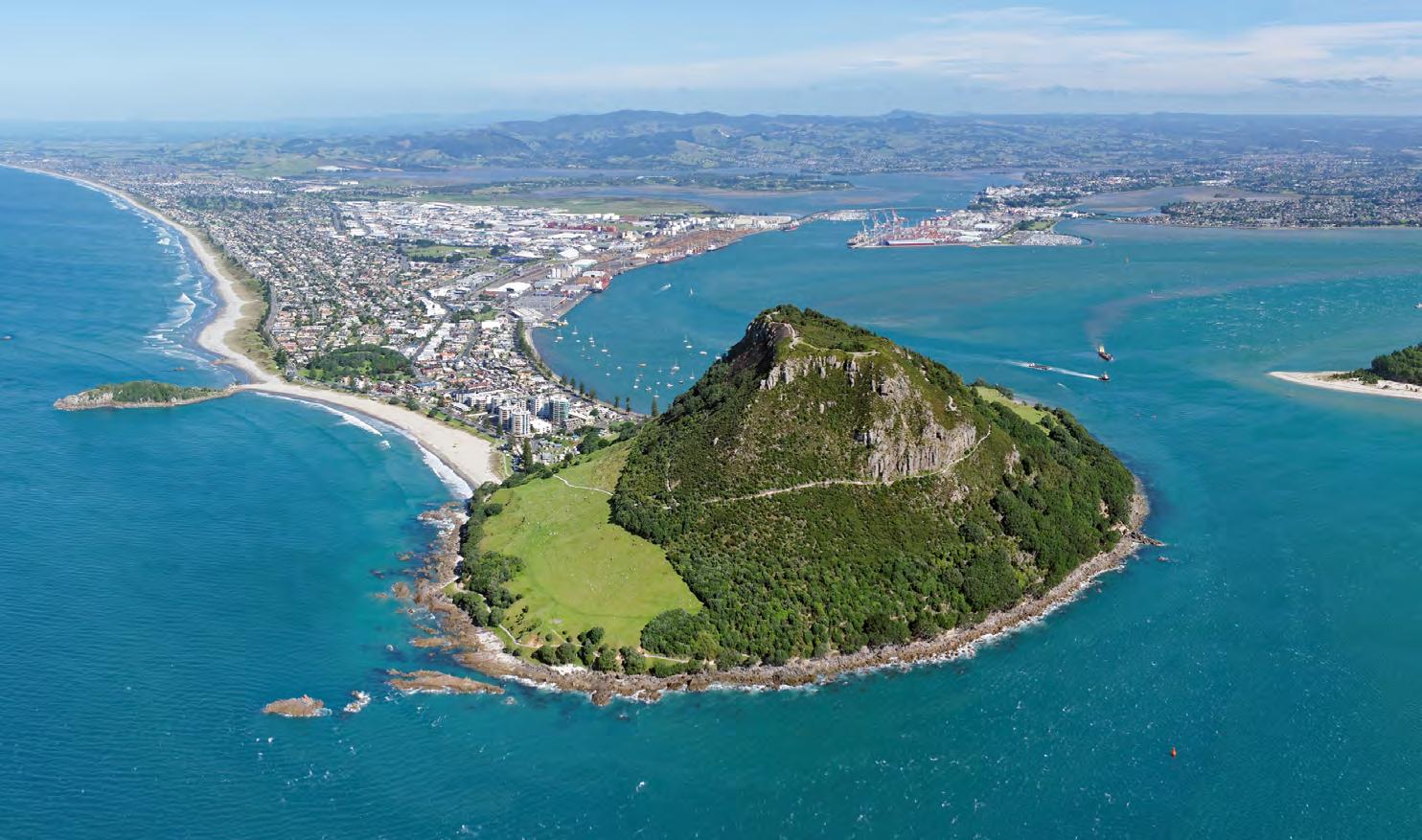
Mount Maunganui, near Tauranga on the North Island of New Zealand
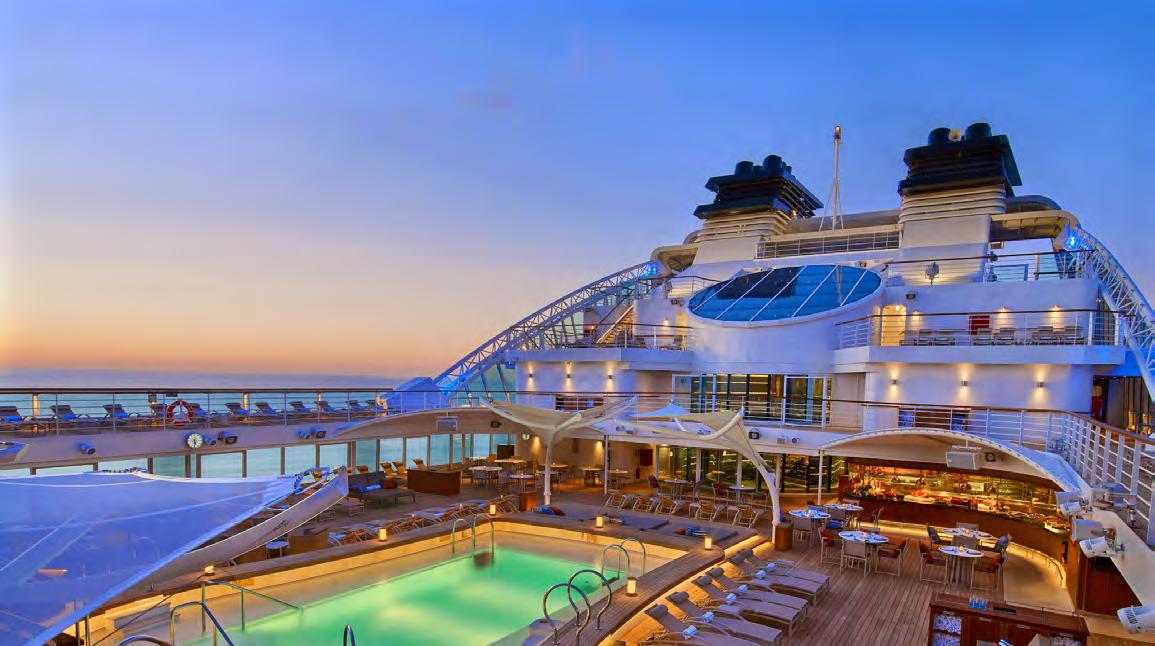
On board of the Seabourn Encore
Our first stop, the pretty beach at Tauranga, is just an hour from the geothermal wonders of Rotorua, an enjoyable drive through countryside with an astonishing variety of farming, from kiwi fruit to olive trees, dairy cattle to apples and pears, pigs and poultry. Sheep as well of course, 27 million in total or five for every New Zealander. Cook called it the Bay of Plenty. His landfall in 1769 was actually just south of here, and because it could not provide everything on his shopping list, other than herbs to deal with scurvy, he rather churlishly called it Poverty Bay. In recent times the All Blacks rugby team has recruited almost half its players from the bay team, so things must be looking up.
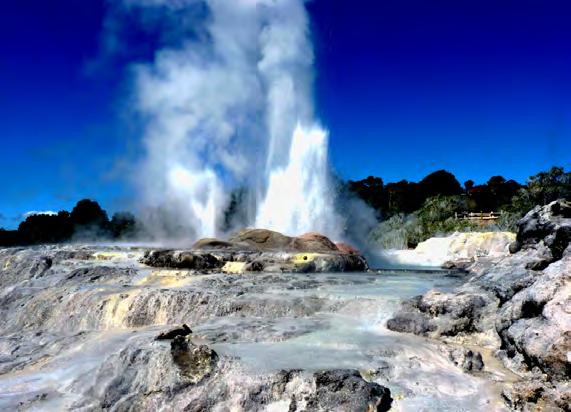
Te Puia Geyser, Whakarewarewa Thermal Valley, Rotorua
The capital city of Wellington rolls up and down with pastel houses amid luxuriant greenery, while the harbour front promenade makes for a fine stroll from the splendid Te Papa national museum at one end to a tasty bunch of seafood restaurants at the other. Ferries leave from here to the south island, but of course we had our Seabourn Encore which landed us at Picton at the head of another picturesque bay.
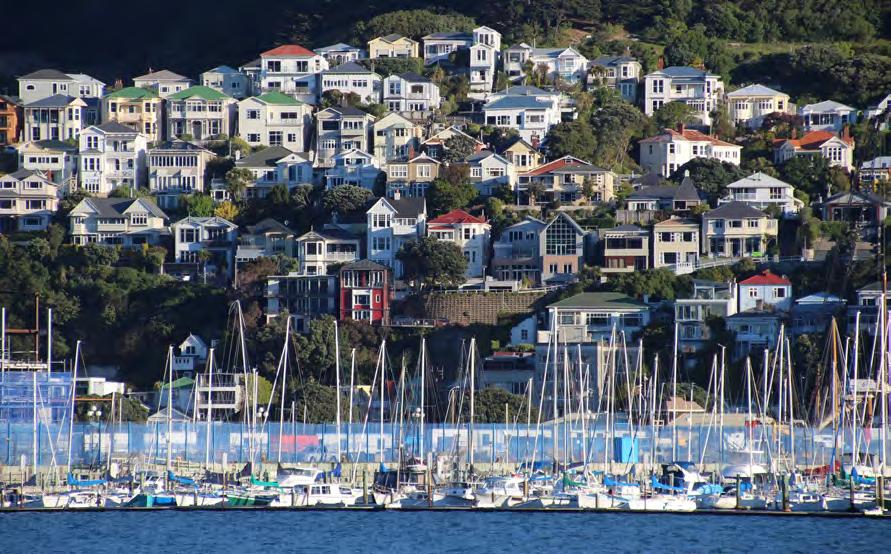
The picturesque harbour of Wellington
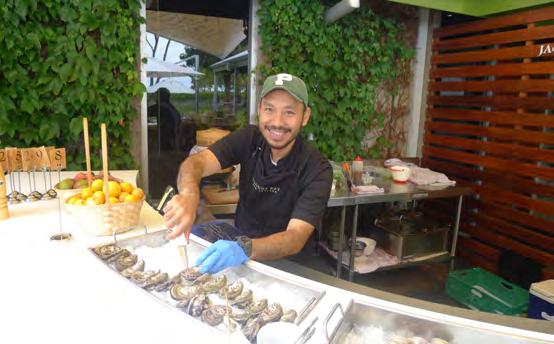
The winery of Cloudy Bay
The target here was Cloudy Bay winery nearby, which produced its first sauvignon blanc in 1965 on land considered unsuitable for grapes, and a year later caused a sensation at a London tasting. Much of the surrounding area is now producing grapes, and as a local told me, “every apricot orchard sold becomes a vineyard.” For all its fame, Cloudy Bay presents as a modest operation with friendly staff and an oyster bar. Other vineyards flourish longer menus and one does alcohol-free gin, which seems pretty pointless.
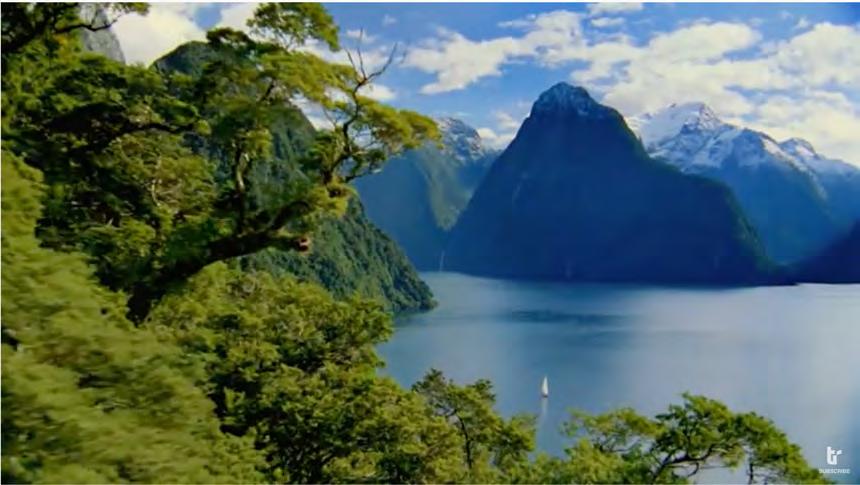
Next day we were in the stunning harbour of Akaroa, settled by the French in 1840. When last here I could see blokes in berets, and while there are still baguettes to be had, most of the little fishermen’s houses have been bought by weekenders from Christchurch.
The Scots made their mark at Dunedin a little to the south, bringing a huge statue of Robert Burns. I liked this place, particularly the bottle shop open on a Sunday – how times have changed here – where I bought an acclaimed pinot noir, Amisfield, from nearby Central Otago. This was carefully carried back to Seabourn Encore, where we were able to drink it that evening without a corkage charge.
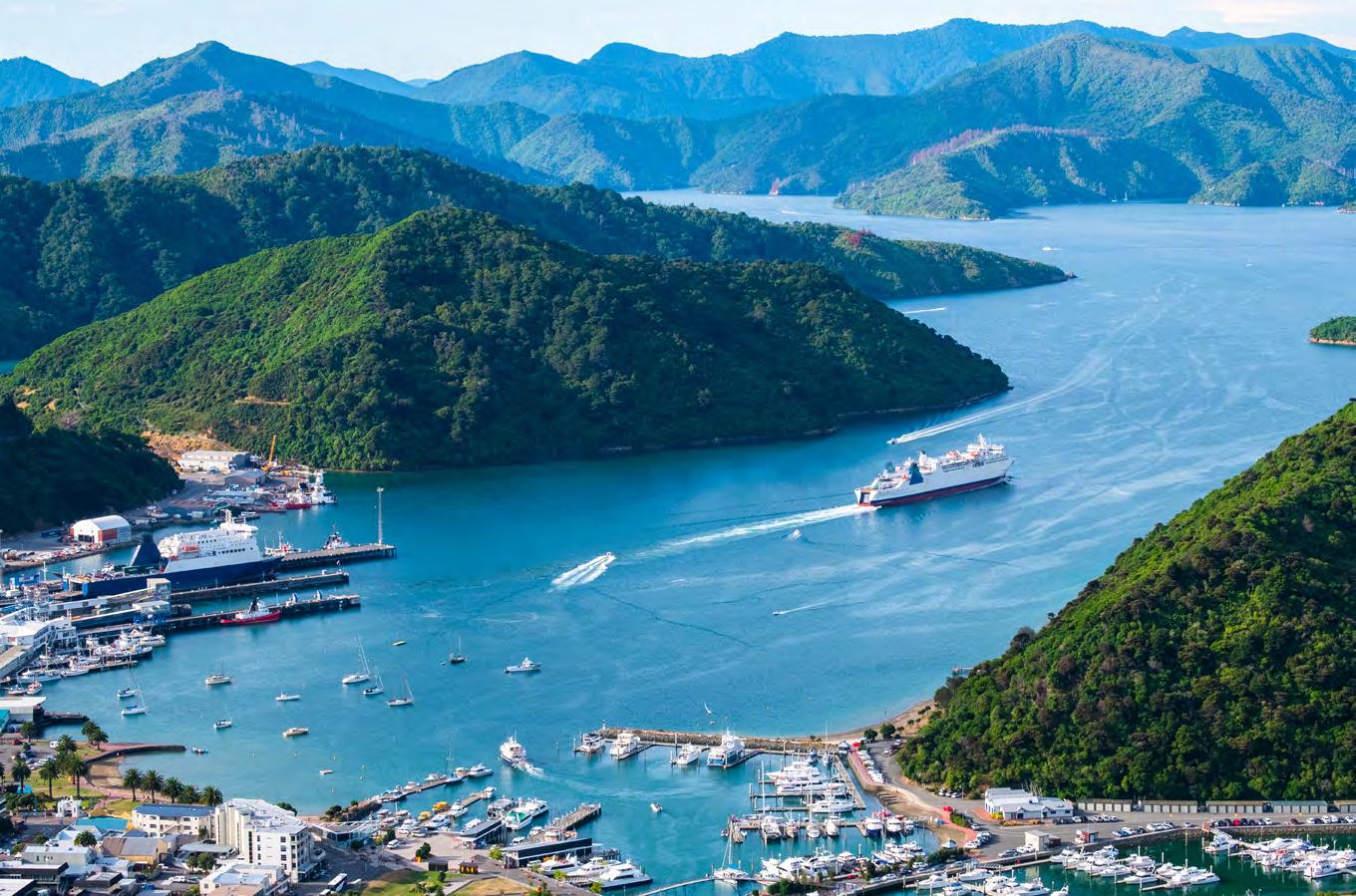
Paranomic view of Picton from the Tirohanga Track
As Seabourn Encore continued its southerly course and seabirds swooped around the ship, passengers increasingly went to 7deck aft where the Ventures team hung out. They were a sixstrong band of expedition-style specialists including ornithologists who scoured the skies with binoculars, and sometimes had issues closer at hand, such as a number of Sooty Shearwaters which landed on deck then were unable to get airborne. No problem. Ventures staffers scooped them up, launched them over the side, and the birds flew off uninjured. One evening one landed on the deck outside the Observation lounge, whereupon the female bartender ran outside, grabbed the distressed bird, and sent it on its way to a huge round of applause from the amazed passengers.
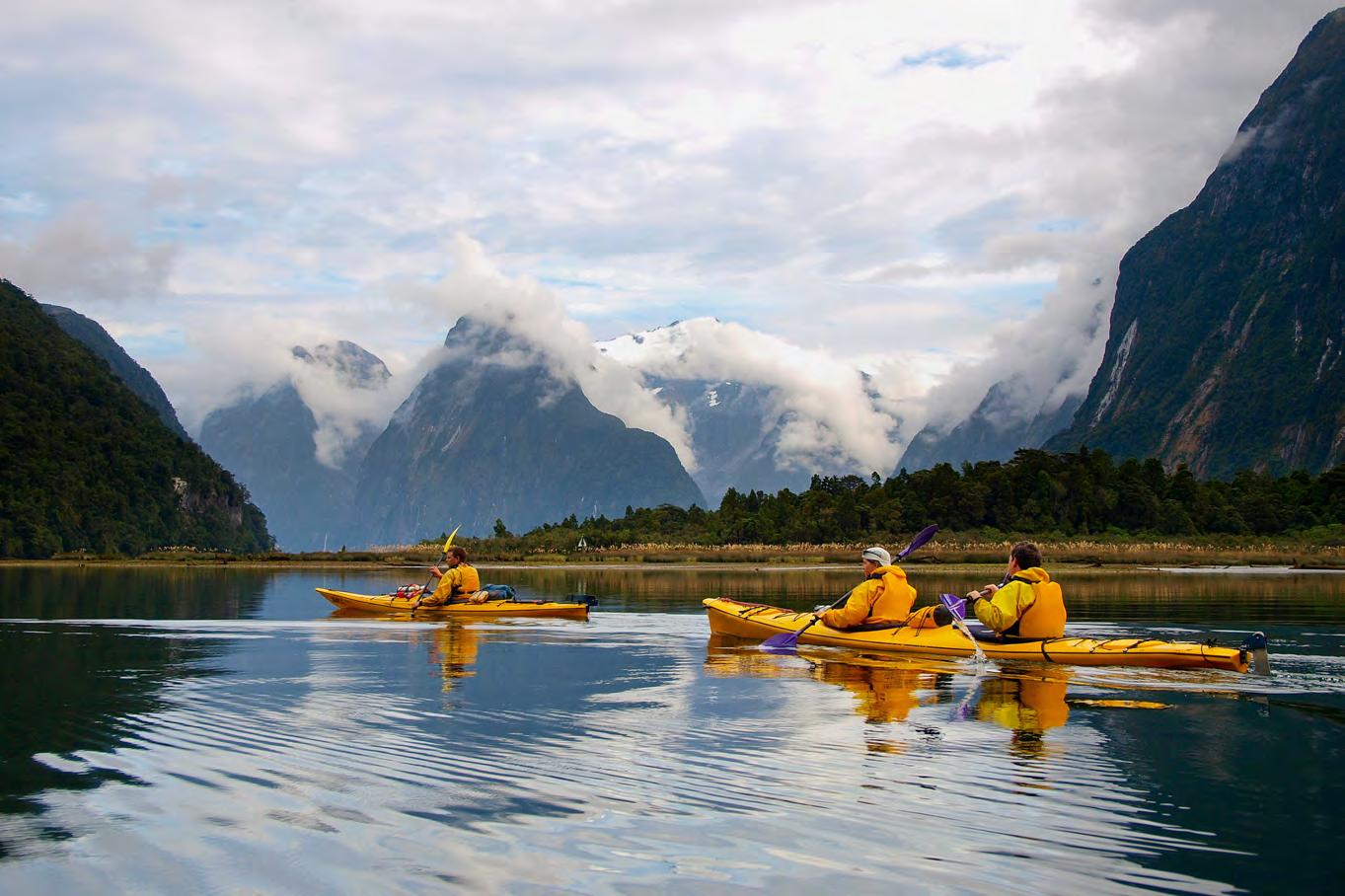
Sea kayak in Milford Sound
At Stewart Island, described as being the last stop before Antarctica, the Ventures were in their element, leading walks on this bird sanctuary, and running tours on Zodiacs and in kayaks. A highlight was our slipping into the fjord at Doubtful Sound, then the majesty of Milford Sound, where all six Zodiacs ferried passengers to the towering Stirling waterfall, at 151 metres, three times the height of Niagara. Actor Hugh Jackman jumped off it in the movie Wolverine. I am assured it is enough of a thrill to paddle underneath and feel the weight of the water.

And so to Melbourne, from where we made the short flight to Adelaide to catch the Ghan train. It is a voyage, a journey on a beautiful small ship (600 passengers) taking in the best of New Zealand and ending (officially) at Sydney, where Australia as we know it, began. Can’t think why I never did this before.










